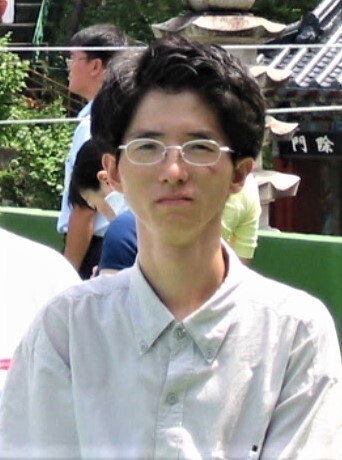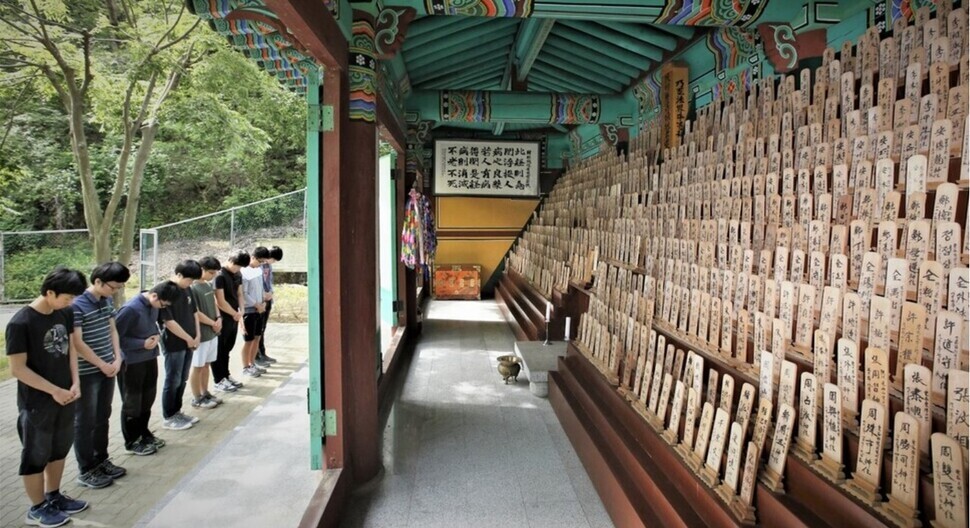hankyoreh
Links to other country sites 다른 나라 사이트 링크
[Reporter’s notebook] Unrecognized by government, S. Korean descendants of atomic bomb victims suffer from rare condition, disability

Sixteen years ago, peace and anti-nuclear activist Kim Hyeong-ryul died at the age of 35 on May 29, 2005. He was a child of an atomic bomb survivor and suffered from a rare condition called congenital immunoglobulin deficiency.
“It is a patent violation of human rights to demand that I prove a causal relationship between radiation exposure and my DNA, after I have lost 70 percent of my lung functioning from congenital immunoglobulin deficiency and suffered through pain worse than death due to the effects of atomic bomb exposure. Proving the relationship between the atomic bombs and DNA is a matter not for the individual to resolve, but for the state and society,” Kim said in his sickbed on March 7, 80 days before he died.
The transmission of aftereffects of atomic bomb exposure to the victims’ children has yet to be acknowledged.
The groups Association for the Second Generation of Korean Atomic Bomb Survivors and Association of Descendants of Korean Atomic Bomb Victims are holding an event Sunday titled “16th Anniversary Memorial for Second Generation Korean Atomic Bomb Victim Kim Hyeong-ryul” at the Hapcheon Atomic Library in Hapcheon County, South Gyeongsang Province.
When the atomic bombs were dropped on the Japanese cities of Hiroshima and Nagasaki in August 1945, some 70,000 Koreans were exposed to the radiation. Around 40,000 of them lost their lives.
Another 23,000 Koreans escaped with their lives and returned home after liberation. But the majority had to suffer from severe aftereffects.
Kim Hyeong-ryul’s parents had been living in Hiroshima when it was bombed. Fortunately, they both survived the blast.
Kim was born with immunoglobulin deficiency, a rare and intractable condition. On March 22, 2002, he went public about his situation as a second-generation atomic bomb victim who had inherited aftereffects from radiation exposure. He established the Association for the Second Generation of Korean Atomic Bomb Survivors as an organization for other victims in a similar situation.
Kim aimed to gain official recognition of the hereditary transmission of effects from atomic bomb exposure. He died without achieving his aim.
In 2013, South Gyeongsang Province surveyed 244 children of atomic bomb victims living in the province. They found 34 of them, or 13.9%, suffering from congenital abnormalities or hereditary diseases.

The congenital abnormalities appeared on the residents’ hands, feet, faces, lungs and hearts; one resident was born without ears. 9.1% of those examined were registered as disabled — nearly double the national disability registration rate of 5%.
The number of children of Korean atomic bomb survivors who suffer from congenital abnormalities or hereditary diseases has been estimated at around 2,300.
Their very existence seems to prove the hereditary transmission of radiation effects, but that phenomenon has yet to be officially acknowledged. South Gyeongsang Province, the city of Busan, Gyeonggi Province, and Hapcheon County all have ordinances to support the children of atomic bomb survivors — but the lack of official recognition of hereditary transmission leaves them unable to provide more practical assistance.
Hapcheon Peace House, a civic group that has offered support for second-generation atomic bomb survivors, said, “Members of the first generation of atomic bomb survivors are in their late 70s or older, which means that support for them will stop completely within the next few decades.”
“The moment they recognize that the effects of radiation exposure are passed on to descendants, the atomic bomb survivor issue turns into something enormous, where they have no idea when it will end. That’s the reason both the Japanese and South Korean governments have refused to recognize the hereditary transmission of radiation effects,” it said.
In May 2020, the Ministry of Health and Welfare launched the first South Korean government-level study to determine whether radiation effects from atomic bomb exposure are transmitted to descendants.
If it is determined that hereditary factors are the reason why so many descendants of atomic bomb survivors suffer from rare and intractable conditions, it could have serious international repercussions. But so far, the study has been effectively halted due to the COVID-19 pandemic.
Current South Korean law defines atomic bomb survivors as those who were physically present — including in the womb — in Hiroshima or Nagasaki when the bombs were dropped.
According to Republic of Korea National Red Cross figures, around 2,000 surviving atomic bomb victims lived in South Korea as of late 2020; their average age was 81.
“Most atomic bomb victims are experiencing a double torture, suffering from effects of radiation exposure themselves while also bearing the suffering of their children who inherited those effects,” said Han Jeong-sook, secretary-general of the Association for the Second Generation of Korean Atomic Bomb Survivors.
“This is why we are arguing that the issue of second-generation atomic bomb survivors is a human rights issue,” she added.
“The government needs to officially acknowledge the hereditary transmission of radiation effects and provide support for medical and living costs to help second-generation atomic bomb survivors achieve self-sufficiency,” she said.
By Choi Sang-won, staff reporter
Please direct comments or questions to [english@hani.co.kr]

Editorial・opinion
![[Column] Will Seoul’s ties with Moscow really recover on their own? [Column] Will Seoul’s ties with Moscow really recover on their own?](https://flexible.img.hani.co.kr/flexible/normal/500/300/imgdb/original/2024/0513/5917155871573919.jpg) [Column] Will Seoul’s ties with Moscow really recover on their own?
[Column] Will Seoul’s ties with Moscow really recover on their own?![[Column] Samsung’s ‘lost decade’ and Lee Jae-yong’s mismatched chopsticks [Column] Samsung’s ‘lost decade’ and Lee Jae-yong’s mismatched chopsticks](https://flexible.img.hani.co.kr/flexible/normal/500/300/imgdb/original/2024/0512/3017154788490114.jpg) [Column] Samsung’s ‘lost decade’ and Lee Jae-yong’s mismatched chopsticks
[Column] Samsung’s ‘lost decade’ and Lee Jae-yong’s mismatched chopsticks- [Correspondent’s column] The real reason the US is worried about Chinese ‘overcapacity’
- [Editorial] Yoon’s gesture at communication only highlights his reluctance to change
- [Editorial] Perilous stakes of Trump’s rhetoric around US troop pullout from Korea
- [Guest essay] Preventing Korean Peninsula from becoming front line of new cold war
- [Column] The state is back — but is it in business?
- [Column] Life on our Trisolaris
- [Editorial] Penalties for airing allegations against Korea’s first lady endanger free press
- [Editorial] Yoon must halt procurement of SM-3 interceptor missiles
Most viewed articles
- 1Ado over Line stokes anti-Japanese sentiment in Korea, discontent among Naver employees
- 2[Column] Samsung’s ‘lost decade’ and Lee Jae-yong’s mismatched chopsticks
- 3Korean opposition decries Line affair as price of Yoon’s ‘degrading’ diplomacy toward Japan
- 4US has always pulled troops from Korea unilaterally — is Yoon prepared for it to happen again?
- 5Korean auto industry on edge after US hints at ban on Chinese tech in connected cars
- 6[Editorial] Yoon’s gesture at communication only highlights his reluctance to change
- 7[Correspondent’s column] The real reason the US is worried about Chinese ‘overcapacity’
- 8[Column] Will Seoul’s ties with Moscow really recover on their own?
- 9[Photo] Korean students protest US complicity in Israel’s war outside US Embassy
- 101 in 3 S. Korean security experts support nuclear armament, CSIS finds